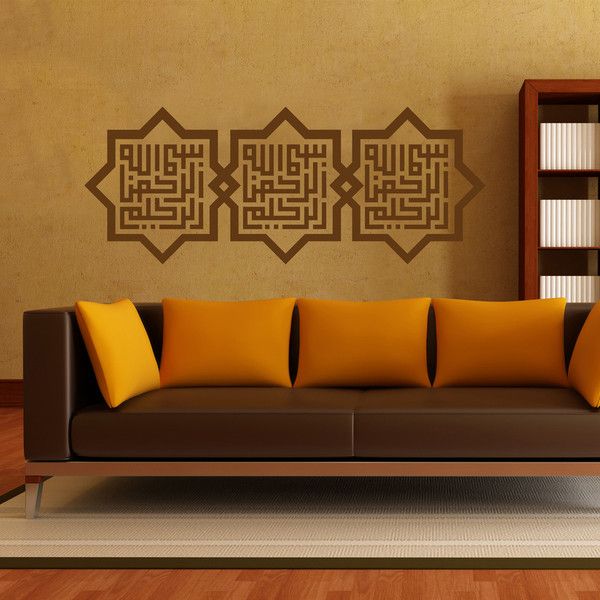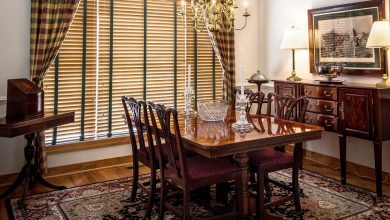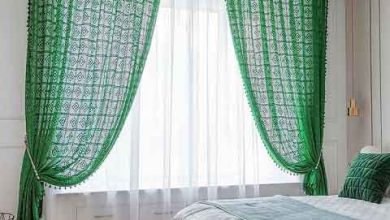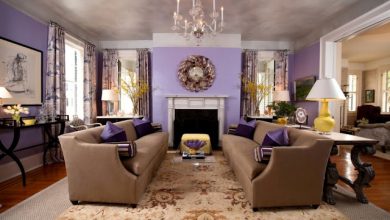Modern Islamic Art the Evolution of Art from Traditional

Islamic art is an ancient art form with a history of over 1,400 years. It is known for its intricate patterns, calligraphy, and geometric shapes that decorate everything from architecture to textiles. Traditional Islamic art has been celebrated for centuries and is deeply rooted in the religion of Islam, where repetition, symmetry, and intricate details are significant hallmarks of the art form. However, Islamic art has evolved with time, with modern interpretations of the art form gaining popularity, especially in home decor. In this article, we will explore the evolution of Islamic art, from traditional to modern, focusing on contemporary Islamic wall art and home decor.
Traditional Islamic Art
Islamic art has been an integral part of Islamic culture for centuries. It emerged in the 7th century after the rise of Islam and is deeply rooted in religion. The art form was used to decorate religious buildings, manuscripts, textiles, and other objects of daily use. Islamic art is known for its intricate designs, geometric patterns, calligraphy, and arabesque motifs.
One of the primary features of traditional Islamic art is its use of repetition, symmetry, and intricate details. Islamic calligraphy is one of the most significant elements of classic Islamic art, with artists using Arabic script to create beautiful works that often include verses from the Quran. Islamic calligraphy is considered the most highly regarded art form in Islamic culture and a spiritual art form. The geometric patterns used in traditional Islamic art are also highly revered. They are often used to create complex, symmetrical designs that represent the infinite nature of Allah. These patterns are also used to decorate Islamic architecture, such as mosques and mausoleums, and are seen as an essential part of Islamic identity and culture.

Islamic Art in the Modern Era
Over time, Islamic art has evolved to incorporate new styles, techniques, and influences. In the modern era, Islamic art has taken on a new life, with artists creating pieces that contain traditional Islamic elements in fresh and innovative ways. One of the key drivers of modern Islamic art has been the rise of contemporary Muslim artists who are using their work to explore issues of identity, culture, and religion. These artists often use traditional Islamic motifs, such as calligraphy and geometric patterns, but incorporate them into contemporary art forms, such as painting and mixed media.
This approach allows them to express themselves in new and innovative ways while still honoring their cultural heritage. Another significant influence on modern Islamic art has been globalization, with artists drawing on various cultural influences to create works that blend traditional Islamic elements with contemporary styles. This has resulted in a diverse range of modern Islamic art, from abstract paintings to digital and street art.
Islamic Calligraphy Art
Islamic calligraphy, also known as the Islamic art of handwriting, is a form of art that has been an integral part of Islamic culture for centuries. It is a combination of beautiful writing and religious expression that has been used to adorn everything from architecture to everyday objects. Islamic calligraphy is considered one of the most highly regarded art forms in Islamic culture and a spiritual art form. The history of Islamic calligraphy dates back to the 7th century, after the rise of Islam. The art form evolved as it spread throughout the Islamic world and became essential to Islamic identity and culture. Islamic calligraphy is primarily based on the Arabic script, considered one of the most beautiful and expressive scripts in the world. The Arabic hand is composed of 28 letters written from right to left.

Islamic calligraphy involves writing verses from the Quran or other religious texts using beautiful and intricate designs. Islamic calligraphers use various tools to create art, such as a reed pen, ink, and paper. They also use a variety of styles and techniques to create different effects in their work. One of the most significant elements of Islamic calligraphy is the use of space and proportion. Islamic calligraphers carefully balance the size and spacing of letters to create a harmonious and aesthetically pleasing composition.
Calligraphers use various colors and materials, such as gold leaf, to add depth and texture to their work. They may also incorporate other decorative elements, such as floral motifs or geometric patterns, to enhance the beauty and meaning of the text.
Modern Islamic Wall Art
Modern Islamic wall art is a popular form of contemporary Islamic art that has recently gained popularity. This type of art typically includes bold colors, mixed media, and abstract designs and is use to decorate everything from living rooms to bedrooms. Popular motifs in modern Islamic wall art include the Kaaba, Arabic calligraphy, and geometric patterns.
These motifs are use creatively and unexpectedly, such as incorporating calligraphy into abstract paintings or using geometric patterns to create modern interpretations of traditional Islamic tiles. Contemporary Islamic wall art has also found a home in home decor, with many people incorporating these pieces into their living spaces. From large canvas prints to smaller framed pieces, modern Islamic wall art can add a touch of sophistication and cultural significance to any room.
Modern Islamic Home Decor
In addition to modern Islamic wall art, modern home decor has also gained popularity recently. This decor includes various items, from textiles to furniture, incorporating traditional Islamic elements in modern ways. Modern Islamic home decor often contains materials, such as rugs and curtains. That feature conventional Islamic motifs, such as arabesque designs and geometric patterns. Furniture with clean, modern lines is also popular in modern Islamic home decor, with pieces often featuring subtle nods to traditional Islamic design, such as intricate carvings or calligraphy.
Lighting is also essential in modern Islamic home decor, with many homeowners opting for pendant lights or lanterns that feature intricate geometric designs. These lights provide functional lighting and add a touch of cultural significance and beauty to the home. Another popular element in modern Islamic home decor is ceramics. Contemporary Islamic ceramics, from vases to plates, often feature intricate patterns and designs that reflect traditional Islamic art forms. These pieces use as decorative elements throughout the home or as functional items for serving and dining.

In addition to Islamic wall decor items, modern Islamic architecture has gained popularity recently. These buildings incorporate traditional Islamic elements, such as arches, domes, and geometric patterns, into contemporary designs. They found worldwide, from the United Arab Emirates to Turkey, and use for religious and cultural purposes. The evolution of Islamic art from traditional to modern has allowed for a rich diversity of styles and techniques. It has also allowed contemporary Muslim artists to express themselves innovatively while still honoring their cultural heritage. Modern Islamic wall art and home decor have gained popularity as a way to incorporate these traditions. Into modern living spaces, adding cultural significance and beauty to any home.
Conclusion
Islamic art has a long and rich history, from its traditional roots to more modern interpretations. The use of repetition, symmetry, and intricate details has been a hallmark of Islamic art for centuries. With calligraphy and geometric patterns playing a significant role in this art form. In the modern era, Islamic art has evolved to incorporate new styles, techniques, and influences. With contemporary Muslim artists using their work to explore issues of identity, culture, and religion.
Modern Islamic wall art and home decor have gained popularity. In recent years as a way to incorporate traditional Islamic elements into modern living spaces. Modern Islamic art offers diverse styles and techniques, from bold and abstract designs to subtle nods to conventional Islamic motifs. Incorporating contemporary Islamic wall art and home decor into your living space can add cultural significance. And beauty to your home while honoring the rich heritage of Islamic art.
Read More: 8 Tips to Choose the Best Lace Curtains





